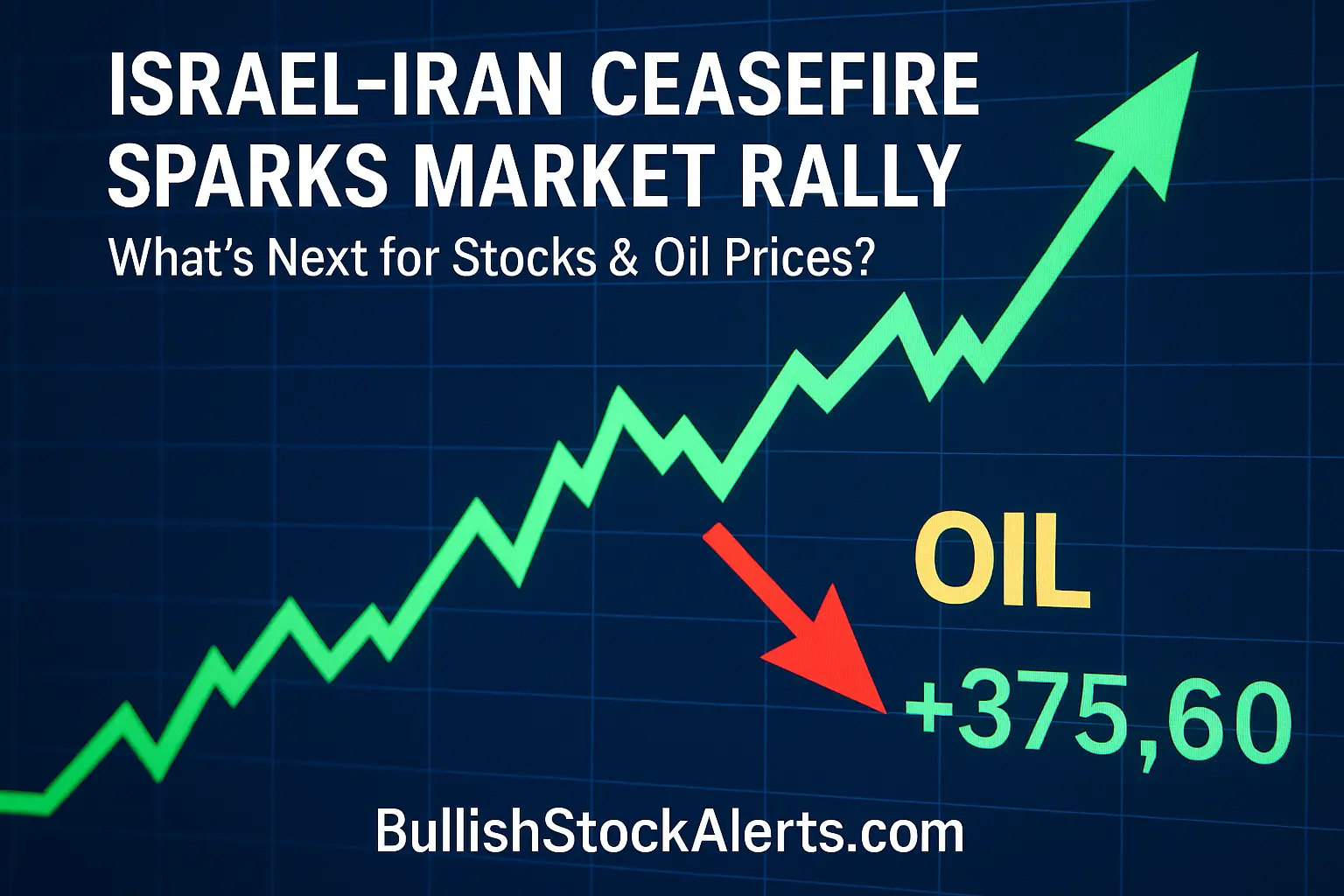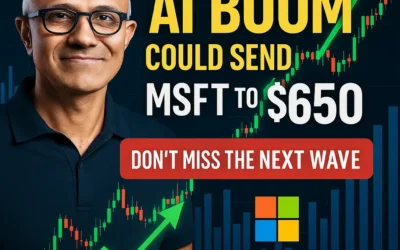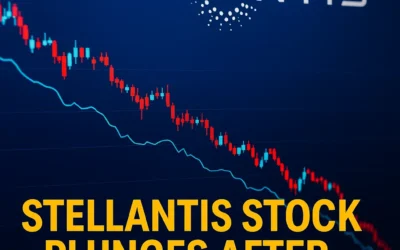Introduction
In an unexpected turn of events, the Israel-Iran conflict, which had caused significant global market turmoil, saw a dramatic pause with the announcement of a ceasefire. This news has sent ripples through the stock markets and global oil prices. But with tensions still simmering, what does this mean for your investments? In this article, we explore how stock futures and oil prices reacted to this news, with insights on where these assets might head next. Stay tuned for our expert analysis, including target price predictions across multiple timeframes.
One of the Best Brokers in Europe
Before diving into the market movements, it’s essential to highlight the broker platform that can help you capitalize on these shifts. As one of Europe’s top brokers, [Broker Name] offers low spreads, powerful trading tools, and real-time insights that are crucial in times of volatility. For traders looking to position themselves strategically, having the right platform is key.
Financial Performance
With the ceasefire announcement in place, the global markets have seen fluctuations. Investors have closely monitored the volatility in oil prices and stock futures, both of which saw substantial movements after the announcement. The drop in oil prices, after hitting highs earlier this week, is a major indicator of how the market is adjusting to the new geopolitical landscape.
Key Highlights
- Dow Jones Industrial Average: Gained 0.68% in futures trading.
- S&P 500: Rose 0.79%, reflecting cautious optimism.
- Nasdaq 100: Led the gains with a 1.06% rise, driven by tech stocks.
- Brent Crude: Fell over 3% in after-hours trading, moving towards a more normalized price range.
These gains signal a return of investor confidence, but we are not out of the woods yet. Future fluctuations in oil prices and stock futures will depend on adherence to the ceasefire and broader economic data.
Profitability and Valuation
Investors are now re-evaluating the profitability of certain assets, particularly in the energy sector. While oil prices saw a dip, some analysts expect a temporary recovery before the market returns to more stable conditions. The valuation of energy stocks, especially those tied to oil and gas, has shifted dramatically in the last few days.
Debt and Leverage
While many energy companies are rebalancing their portfolios, the rising costs of borrowing are affecting profitability in the sector. Increased oil prices have led to higher debt servicing costs for many companies. The short-term risks of geopolitical conflicts are further compounded by rising interest rates globally, making it essential for traders to adjust their strategies accordingly.
Growth Prospects
The growth prospects for oil-related stocks depend largely on the resolution of the conflict in the Middle East and the global recovery in demand. For companies involved in the energy sector, especially those with significant exposure to Middle Eastern oil production, a sustainable ceasefire would allow for an increase in supply and potentially lower prices, which could stimulate growth in the longer term.
Technical Analysis
Looking at the charts, stock futures showed strong gains as market sentiment shifted towards a more optimistic view after the ceasefire. The immediate reaction saw a rally, but the critical question is whether this is a temporary relief or the start of a longer recovery.
- Support levels for Brent Crude: $65 and $68.
- Resistance levels: $80 and $83.
- S&P 500: Potential breakout above 4,500, with strong support at 4,350.
Technical traders should watch for confirmations that the ceasefire news holds up and doesn’t lead to further escalations.
Potential Catalysts
While the ceasefire has brought some calm, the key catalyst for future market movements will be:
- The adherence to the ceasefire by both Iran and Israel.
- The economic data coming from the US, including the Federal Reserve’s policy stance.
- Oil supply issues in the Middle East, especially concerning the Strait of Hormuz.
Any disruption in these areas could result in a sharp reversal of the recent gains.
Leadership and Strategic Direction
Looking at the leadership of the companies involved, strong management decisions will play a key role in navigating through this geopolitical uncertainty. Companies that have diversified operations outside the Middle East and have hedged against geopolitical risks are more likely to perform well in the face of continued global tensions.
Impact of Macroeconomic Factors
Macroeconomic factors like inflation, interest rates, and global trade relations will remain critical drivers of market performance. The ongoing tension between the US and China, along with global oil price fluctuations, will influence both short-term and long-term trading strategies.
Total Addressable Market (TAM)
The TAM for energy stocks, particularly those with exposure to the Middle East, is significant. The demand for energy remains high globally, and any resolution to geopolitical tensions could lead to an uptick in global energy demand.
Market Sentiment and Engagement
Investor sentiment is largely shaped by the political and economic developments in the Middle East. As oil prices fluctuate, market engagement will intensify, and short-term traders will play a significant role in driving volatility.
Conclusions, Target Price Objectives, and Stop Losses
In conclusion, the current ceasefire provides a brief window of relief for markets. However, uncertainty remains high, and traders should remain vigilant.
- Target Price for Brent Crude: Short-term target at $75, medium-term target at $82.
- S&P 500: Short-term target of 4,500, long-term target of 4,700.
- Stop Losses: For oil positions, set a stop loss at $68 to protect against further downside.
Discover More
For more insights into analyzing value and growth stocks poised for sustainable growth, consider this expert guide. It provides valuable strategies for identifying high-potential value and growth stocks.
We also have other highly attractive stocks in our portfolios. To explore these opportunities, visit our investment portfolios.
This analysis serves as information only and should not be interpreted as investment advice. Conduct your own research or consult with a financial advisor before making investment decisions.
Looking to Educate Yourself for More Investment Strategies?
Check out our free articles where we share our top investment strategies. They are worth their weight in gold!
📖 Read them on our blog: Investment Blog
For deeper insights into ETF investing, trading, and market strategies, explore these expert guides:
📘 ETF Investing: ETFs and Financial Serenity
📘 Technical Trading: The Art of Technical & Algorithmic Trading
📘 Stock Market Investing: Unearthing Gems in the Stock Market
📘 Biotech Stocks (High Risk, High Reward): Biotech Boom
📘 Crypto Investing & Trading: Cryptocurrency & Blockchain Revolution
Did you find this article insightful? Subscribe to the Bullish Stock Alerts newsletter so you never miss an update and gain access to exclusive stock market insights: https://bullishstockalerts.com/#newsletter.
Avez-vous trouvé cet article utile? Abonnez-vous à la newsletter de Bullish Stock Alerts pour recevoir toutes nos analyses exclusives sur les marchés boursiers : https://bullishstockalerts.com/#newsletter.









0 Comments